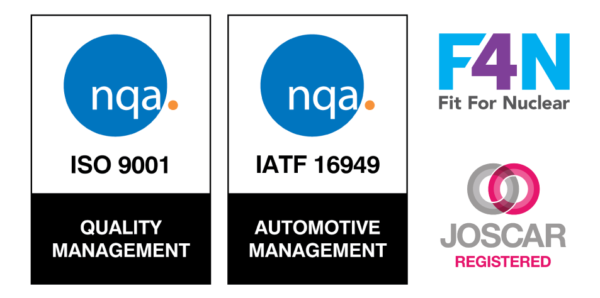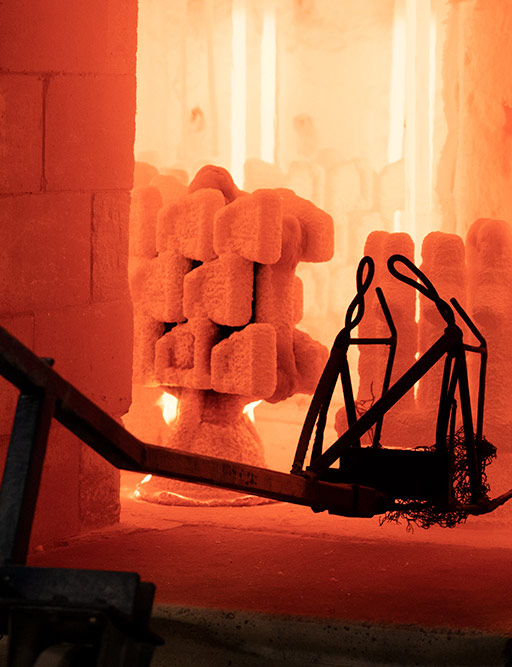Common Metal Casting Processes and Their Applications
Sand casting is one of the most widely used metal casting processes, known for its versatility and cost-effectiveness. There are two methods; the first involves creating a mould from a mixture of sand and a binding agent (chemically bonded sand), into which molten metal is poured. The other method uses green sand, which is chemical-free. Sand casting is particularly suited for producing large and complex components, making it a popular choice in aerospace, heavy machinery and industrial industries. The process allows for the use of a wide range of metals, including aluminium, iron, and steel, and is highly adaptable to both small-scale and large-scale production.
Investment casting, also known as lost-wax casting, is another prevalent method that offers exceptional precision, detail, and a good surface finish. This technique involves creating a wax model of the desired part, which is then coated with a ceramic shell. Once the shell hardens, the wax is melted away, leaving a cavity that is filled with molten metal. Investment casting is ideal for producing intricate and high-quality components, making it a preferred choice in industries such as defence, medical devices, motorsport, automotive, marine and energy. The ability to achieve tight tolerances and smooth finishes makes this process indispensable for applications requiring high precision. This process is ideal for low- to medium-volume production and rapid prototyping. Investment castings can be manufactured in ferrous & non-ferrous metals and superalloys.
High-pressure die casting is a highly efficient and automated process that involves injecting molten metal into a steel mould under high pressure. This method is ideal for producing large quantities of small to medium-sized parts with excellent dimensional accuracy and surface finish. Die casting is commonly used in the automotive, electronics, and consumer goods industries, where speed and consistency are paramount. The process can accommodate a variety of non-ferrous alloys, including aluminium, zinc, and magnesium, and is particularly valued for its ability to produce lightweight and durable components.
Innovations in Metal Casting Technology
The metal casting industry has witnessed remarkable innovations in recent years, driven by advancements in technology and materials science. One of the most significant developments is the integration of 3D printing with traditional casting methods. Additive manufacturing, or 3D printing, allows for the creation of highly complex mould patterns and prototypes with unprecedented precision and speed. This technology has revolutionised the design and production process, enabling foundries to produce custom castings with reduced lead times and lower costs. The ability to print intricate geometries that would be challenging or impossible to achieve with conventional methods has opened new possibilities for innovation in metal casting.
We have seen the introduction of simulation software, which predicts the behaviour of molten metal flow and solidification throughout the mould. The software highlights any issues of concern with the casting design, allowing for component redesign and the repositioning or resizing of feeds. This vastly increases the chances of ‘right first time’ and lessens the chance of defects in the casting.
Sustainability has become a key focus in the metal casting industry, leading to the development of eco-friendly practices and materials. Innovations such as recyclable sand moulds, biodegradable binders, and energy-efficient furnaces are helping to reduce the environmental impact of casting processes. The adoption of closed-loop systems for waste management and the use of renewable energy sources are also contributing to more sustainable operations. These advancements not only benefit the environment but also enhance the industry’s reputation and competitiveness in a market increasingly conscious of sustainability.
Trends Shaping the Future of the Metal Casting Industry
The metal casting industry is continually evolving, with several key trends shaping its future. One of the most prominent trends is the increasing demand for lightweight materials, driven by the need for fuel efficiency and reduced emissions in the automotive and aerospace sectors. The development of advanced alloys and composite materials that offer high strength-to-weight ratios is enabling the production of lighter and more efficient components. This trend is expected to continue, with ongoing research and development focused on creating new materials that meet the stringent requirements of modern applications.
Another significant trend is the rise of smart manufacturing and Industry 4.0 technologies, which are transforming the metal casting landscape. The implementation of Internet of Things (IoT) devices, artificial intelligence (AI), and data analytics is enabling foundries to optimise their operations and enhance decision-making. IoT sensors can monitor equipment performance and environmental conditions in real-time, providing valuable data for predictive maintenance and process optimisation. AI algorithms can analyse this data to identify patterns and recommend improvements, leading to increased efficiency and reduced downtime. The integration of these technologies is paving the way for more intelligent and responsive manufacturing environments.
Material Selection for Optimal Casting Results
Choosing the right material is crucial for achieving optimal casting results, as different metals and alloys offer distinct properties and performance characteristics. Aluminium is a popular choice for casting due to its lightweight, corrosion resistance, and excellent thermal conductivity. It is widely used in the automotive and aerospace industries for components such as engine blocks, transmission housings, and structural parts. Aluminium alloys can be tailored to enhance specific properties, such as strength, ductility, and machinability, making them versatile and adaptable to various applications.
Steel is another commonly used material in metal casting, known for its strength, durability, and versatility. Cast steel components are prevalent in industries such as construction, mining, and transportation, where high mechanical performance is essential. Different grades of steel, such as carbon steel, alloy steel, and stainless steel, offer varying levels of hardness, toughness, and corrosion resistance. The choice of steel grade depends on the intended application and the specific requirements for wear resistance, impact strength, and environmental conditions.
Copper and its alloys, such as bronze and brass, are also widely used in casting due to their excellent electrical and thermal conductivity, corrosion resistance, and aesthetic appeal. These materials are commonly used in applications such as electrical components, plumbing fixtures, and decorative items. Copper alloys can be engineered to provide specific properties, such as enhanced strength, wear resistance, and machinability. The selection of the appropriate copper alloy depends on the desired balance of performance characteristics and the intended use of the casting.
Nickel or cobalt-based alloys (typically referred to as high-temperature alloys or superalloys) are commonly used to produce castings for the motorsport industry. These alloys boast very high strength, high resistance to corrosion, durability and resistance to high temperatures.
Quality Control and Testing in Metal Casting
Ensuring the quality and reliability of metal castings is paramount, requiring rigorous quality control and testing procedures. Non-destructive testing (NDT) methods are widely used to detect defects and ensure the integrity of cast components without damaging them. Techniques such as X-ray radiography, ultrasonic testing, and magnetic particle inspection allow for the identification of internal and surface defects, such as porosity, cracks, and inclusions. These methods provide valuable insights into the structural integrity of castings, enabling foundries to address potential issues before they lead to failures in service.
Dimensional inspection is another critical aspect of quality control in metal casting, ensuring that cast components meet precise geometric specifications. Coordinate measuring machines (CMMs) and optical measurement systems are commonly used to verify the dimensions and tolerances of castings. These advanced tools provide accurate and repeatable measurements, allowing foundries to identify deviations from design specifications and make necessary adjustments. Dimensional inspection is essential for maintaining consistency and ensuring that cast components fit and function as intended in their final applications.
Material testing is also vital for verifying the mechanical properties and performance characteristics of castings. Techniques such as tensile testing, hardness testing, and impact testing provide valuable data on the strength, ductility, and toughness of cast materials. Chemical analysis methods, such as spectroscopy and X-ray fluorescence (XRF), are used to determine the composition of metals and alloys, ensuring that they meet the required specifications. Comprehensive material testing helps foundries to select the right materials for specific applications and to ensure that cast components perform reliably under various operating conditions.
Environmental Considerations in Metal Casting
The environmental impact of metal casting is a growing concern, prompting the industry to adopt more sustainable practices and technologies. One of the primary environmental challenges in casting is the generation of waste materials, such as sand, slag, and metal scraps. Implementing closed-loop recycling systems can significantly reduce waste and improve resource efficiency.
Energy consumption is another critical environmental consideration in metal casting, as the melting and pouring processes require significant amounts of energy. Foundries are increasingly adopting energy-efficient technologies, kinetic energy capture and regenerative burners, to reduce energy usage and greenhouse gas emissions. The use of renewable energy sources, such as solar and wind power, is also gaining traction in the industry, contributing to a lower carbon footprint. Implementing energy management systems and optimizing process parameters can further enhance energy efficiency and reduce the overall environmental impact.
The use of environmentally friendly materials and recycling is also an important aspect of sustainable casting practices. The development of biodegradable and low-toxicity binders is helping to mitigate these environmental risks. Additionally, the use of alloys with reduced environmental impact, such as lead-free and cadmium-free materials, is becoming more prevalent. These innovations not only benefit the environment but also improve workplace safety and compliance with regulatory standards.





